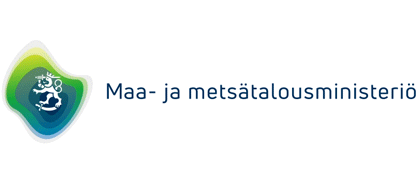Free-Time Residence Barometer: growth in popularity and more common remote work
There are more than 600,000 free-time residences in Finland, with 2.4 million regular free-time residents. In 2014 the Finns used about EUR 6.2 billion on their free-time residences, as shown by the Ministry of Agriculture and Forestry's Free-time Residence Barometer, submitted to the Minister of Agriculture and the Environment Kimmo Tiilikainen on 17 March 2016.
According to the barometer, the popularity of free-time residences is increasing. The Finns spend an average of 79 days at their free-time residences. Approximately 60,000 Finns work remotely from their free-time residence, and 100,000 are occasional commuters. Willingness to work remotely is growing, with one out of three wanting to work remotely at their free-time residence.
The financial and employment effects of free-time residences are great. In 2014 free-time residency spending totalled about EUR 6.2 billion, and free-time residency employs, directly or indirectly, 60,000 people. Most of all, free-time residents spend money on repairs (EUR 1.7 billion), groceries (1.4 billion), travelling (1.2 billion) and property trades (0.7 billion).
– Free-time residents move a lot of money in Finland, which ensures services and employment. They have an important role in the development of the countryside. Free-time residents who also take the environment into account have a very positive impact on the rural and insular business communities, says minister Tiilikainen.
The level of equipment of Finnish free-time residences has improved. One third of the residences are fit for year-round use. Over 90 percent have access to electric power, 14 percent of this generated by solar panels and 17 percent with heat pumps. Solar power and heat pumps have become much more popular in the past six years. Indoor and composting toilets have also become more popular, whereas earth closets are becoming less common. Today, nearly a third of free-time residences have Internet connections, while according to the 2009 barometer less than ten percent of residences were connected.
Dual residency and services of interest to free-time residents
Over 60 % of participating non-local free-time residence owners are in favour of a dual residency. Dual residency would enable non-local residents to have the same service, voting and election eligibility rights as permanent residents. With dual residency, part of the free-time resident’s municipal taxes would be paid to the free-time municipality. Eight percent of non-local free-time residents, 31,000 free-time households, thought it possible to move to their free-time municipality within the next three years. 65 % of free-time residence owners are in favour and 13 % against reducing bureaucracy in constructing free-time residences and outbuildings.
– Our government supports the development of free-time residency by facilitating the possibility of moving to the free-time residence and by reducing unnecessary construction bureaucracy, says minister Tiilikainen.
The Free-time Residence Barometer is based on a survey of 5,000 free-time residence owners as well as statistical and research data. The Free-time Residence Barometer was used to survey the development of free-time residence use, remote work and commuting, as well as the development of spending and employment effects. It was also used to find out about the use of services, level of equipment of the residences and attitudes towards free-time residents and the environment.
The Free-time Residence Barometer was created by Finnish Consulting Group FCG, commissioned and funded by the Ministry of Agriculture and Forestry’s Island Committee. Previous Free-time Residence Barometers were published in 2003 and 2009.
Finnish free‐time residence barometer 2016 (summary in English)
Inquiries:
Jorma Leppänen, Ministerial Adviser, Ministry of Agriculture and Forestry, tel. +358 400 744 900
Heikki Miettinen, Research Manager, Finnish Consulting Group FCG, tel. +358 500 726 675



